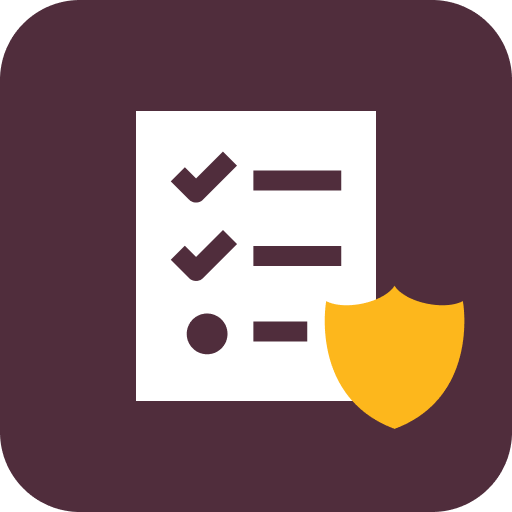A T4 slip is an official tax document issued by Canadian employers to their employees that summarizes the employment income and deductions for the tax year. Officially called “Statement of Remuneration Paid,” it reports the total wages, salaries, and other income paid to the employee, any income tax withheld, contributions to the Canada Pension Plan (CPP), and other deductions such as employment insurance (EI) premiums.
What information does the T4 slip contain?
Employers must issue T4 slips (or T4 statements) to comply with Canada Revenue Agency (CRA) regulations. This helps both the employer and employee report accurate income and tax details. For employees, the T4 slip is crucial for filing their tax return and understanding how much they earned and how much tax they’ve already paid.
A T4 slip includes several key details, including:
- Box 14 — Employment income: This is the total amount of employment income (wages, salaries, bonuses, etc.) that the employee received during the calendar year.
- Box 16 — Employee’s CPP contributions: This shows the employee's total CPP contributions to the Canada Pension Plan.
- Box 22 — Income tax deducted: This reports the total income tax deducted from the employee’s pay.
- Box 24 — EI insurable earnings: This shows the earnings of employees eligible for employment insurance (EI) premiums.
- Box 52 — Pension adjustment: This box reports any pension adjustments that could affect the employee’s ability to contribute to a Registered Retirement Savings Plan (RRSP).
Employers must also include other types of income, such as union dues, charitable donations, and employee’s CPP contributions, to ensure all income and deductions are accurately reported.
T4 slip filing requirements for employers
Employers in Canada are responsible for filing T4 slips to report their employees' employment income and tax deductions for the year.
The T4 slip must be given to employees and filed with the Canada Revenue Agency (CRA) by the last day of February following the tax year. This means employers must provide the T4 slips before the end of February for income earned during the previous calendar year.
Submission process to the Canada Revenue Agency (CRA)
Employers must submit T4 slips to the CRA as part of their tax filing.
There are two ways to do this:
- Electronically: Employers can use the CRA’s online portal to upload and submit their T4 slips. This is the most efficient method, especially if the employer has many employees.
- Paper filing: If the employer has fewer than 50 employees, they may choose to submit the T4 slips on paper, but the CRA encourages electronic submission to avoid errors.
Employers must also file a T4 Summary, which summarizes all the employment income, CPP contributions, and EI premiums reported for all employees during the year, along with the T4 slip.
Potential penalties for late or incorrect filing
If an employer files T4 slips late or with incorrect information, they may face penalties from the Canada Revenue Agency. Penalties include:
- Late filing penalties: If you miss the last day of the February deadline, the CRA may charge a penalty depending on how late the submission is and the number of T4 slips due.
- Incorrect filing penalties: Errors such as misreporting employment income in Box 14, failing to include CPP contributions in Box 16, or not reporting EI premiums in Box 24 can result in fines. Employers can avoid this by carefully checking the details before submitting the T4 slips.
Many businesses use payroll software to ensure that all information, including employees' CPP contributions, EI premiums, and income tax deductions, is accurate and submitted on time to reduce the risk of errors and penalties.
Common mistakes to avoid when preparing T4 slips
Preparing T4 slips is an important task for employers in Canada. Mistakes in this process can lead to issues with the CRA, resulting in penalties or incorrect reporting of an employee’s employment income and tax deductions.
Here’s a list of frequent errors employers should avoid and tips to ensure accuracy and compliance:
1. Incorrect Social Insurance Number (SIN)
One of the most common mistakes is entering the wrong social insurance number (SIN) for employees. The SIN is crucial for the CRA to match the employee’s T4 slip with their tax return. Always double-check the SIN when preparing T4 slips and verify it against your records to ensure it’s correct.
2. Misreporting employment income in Box 14
Another frequent error is misreporting the employee’s employment income in Box 14. This box must show the total wages, bonuses, and other payments the employee received during the tax year. Ensure that all forms of income, including employment earnings, employment commissions, and any taxable benefits, are included in Box 14.
3. Incorrect CPP and EI contributions
Employers sometimes incorrectly report CPP contributions in Box 16 or EI premiums in Box 24. These boxes must show the exact amount of the employee’s contributions to the Canada Pension Plan (CPP) and Employment Insurance (EI). Use payroll software to automatically calculate the employee’s CPP contributions, EI premiums, and pension adjustments to avoid errors.
4. Missing or incorrect deductions
Another common mistake is failing to report deductions such as union dues, RRSP contributions, or charitable donations. These deductions are important for employees’ tax returns and must be reported accurately. Keep clear records of all deductions throughout the year and ensure they are reported correctly on the T4 slip.
5. Failing to meet filing deadlines
Employers must issue T4 slips to employees and submit them to the CRA by the last day of February. Missing this deadline can result in penalties. Set reminders and use payroll software to ensure all T4 slips are prepared and submitted on time. Ensure you also file the T4 summary accurately.
6. Not correcting errors quickly
If errors are discovered after a T4 slip has been issued, some employers fail to correct them promptly, leading to fines from the CRA. If you notice any mistakes, file an amended T4 slip with the CRA as soon as possible to avoid penalties.
T4 slips vs. other tax forms in Canada
In Canada, employers and payers must issue several different tax slips depending on the type of income being reported. The T4 slip is the most common, but there are also T4A and T5:
- T4A slip (Statement of Pension, Retirement, Annuity, and Other Income) is used to report income that isn’t considered regular employment income. This includes self-employed income, retiring allowances, annuities, RRSP withdrawals, and payments from scholarships or bursaries. Businesses and organizations must issue T4A slips when reporting these types of payments.
- T5 slip (Statement of Investment Income) is used to report investment income, such as dividends, interest, and royalties. It is typically issued by banks, investment companies, or other financial institutions to individuals or businesses who earn investment returns.
Best practices for managing T4 slips
Managing T4 slips can be a complex task for employers, but following some best practices can make the process easier and more efficient:
Tips for efficient record-keeping
- To prepare T4 slips accurately, keep records of all employee payments and deductions throughout the tax year. This includes employment income, CPP contributions, EI premiums, and any taxable benefits like dental benefits or health services plans.
- Ensure you accurately record deductions for things like RPP contributions (Registered Pension Plan), charitable donations, and union dues. Keeping these records updated will help when it’s time to fill out the relevant boxes on the T4 slip.
- If your employees receive different types of income, such as taxable allowances, retiring allowances, or profit-sharing plan payments, make sure these are recorded separately. This ensures the correct amounts go into the right boxes, such as Box 14 for employment income and Box 24 for EI insurable earnings.
Using payroll software for T4 preparation
- Payroll software can automatically calculate important figures like CPP contributions, EI premiums, and income tax deductions. This reduces the risk of errors that can occur with manual calculations, ensuring that your T4 slips are accurate.
- Payroll software can also generate T4 slips for each employee at the end of the calendar year. This streamlines the process, saving time and reducing the chance of missing deadlines.
- Most payroll software allows employers to submit T4 slips electronically to the CRA, which is faster and more secure than paper filing. This helps ensure compliance and prevents issues like late submission.
Ensure data privacy
- T4 slips contain personal information like an employee’s social insurance number and detailed income data. Use encrypted files and secure storage systems to protect this information.
- Only authorized personnel should have access to payroll records and T4 slips. This helps protect sensitive data from unauthorized access and ensures compliance with privacy regulations.
- To avoid losing critical payroll and T4 slip information, ensure that all data is backed up regularly. As mentioned, this can be done securely through cloud-based payroll software or other reliable backup methods.
Recent changes and updates to T4 slip requirements
In recent years, there have been some important changes to the requirements for issuing T4 slips in Canada. These updates are designed to improve tax reporting accuracy and address new circumstances, such as the impact of the COVID-19 pandemic. Employers must stay aware of these changes to ensure they remain compliant with CRA regulations.
COVID-19 benefit reporting
One of the major recent updates is the requirement to report any COVID-19-related benefits that employees received. Employers now need to account for subsidies like the Canada Emergency Wage Subsidy (CEWS) and other pandemic-related relief programs on the T4 slip. These amounts are reported in specific boxes on the slip to ensure the CRA can track all financial assistance accurately.
Additional reporting codes
The CRA introduced new reporting codes on the T4 slip to capture amounts received during different periods of the year. Employers must now provide more detailed information in the following boxes:
- Box 57: Employment income for pay periods from March 15 to May 9, 2020
- Box 58: Employment income for pay periods from May 10 to July 4, 2020
- Box 59: Employment income for pay periods from July 5 to August 29, 2020
- Box 60: Employment income for pay periods from August 30 to September 26, 2020
The recent changes to T4 slip requirements mean employers must provide more detailed information, requiring precise tracking of employment income and benefits during specific periods. They must accurately fill out the new reporting boxes to avoid errors and penalties.
To meet these new requirements, many employers may need to invest in updated payroll systems or software to ensure they can report the additional details required by the CRA, as manual processing increases the risk of mistakes.
Failing to report COVID-19-related benefits or improperly completing the new boxes can result in penalties, so staying up-to-date with the latest guidelines is essential for compliance.
Frequently asked questions about T4 slips
What is the deadline for issuing T4 slips to employees and filing them with the CRA?
The deadline to issue T4 slips to employees and file them with the CRA is the last day of February following the end of the calendar year. This ensures that all relevant employment income and deductions are properly reported for the tax year.
Employers should also make sure that specific boxes such as box 20 (RPP contributions) and box 44 (union dues) are filled out accurately and be aware of additional reporting if employees are covered under the Quebec Pension Plan (QPP) or other provincial plans.
How do I correct an error on a T4 slip after it has been issued?
If you discover an error on a T4 slip, such as incorrect QPP contributions or missing amounts in box 44 (union dues), you must file an amended slip with the CRA. It's important to review all fields, including box 20 (RPP contributions) and QPP pensionable earnings, to ensure that all contributions and deductions are correct.
Any inaccuracies must be corrected on the updated slip for employees covered by a registered pension plan (RPP) or insurance plan. Employers should check for any issues related to exemptions or errors made in previous years and address them accordingly.
Are there any special considerations for reporting COVID-19-related benefits or payments on T4 slips?
Yes, when reporting COVID-19-related benefits, employers must ensure they report any additional income or benefits earned during specific periods, such as those affecting employee’s PPIP premiums (Quebec Parental Insurance Plan). This applies particularly to employees in Quebec who may have specific reporting requirements for the Quebec Pension Plan (QPP) and their QPP pensionable earnings. Employers should also review data for discrepancies in previous years to ensure adjustments or corrections are made, if necessary.
Rippling and its affiliates do not provide tax, legal, or accounting advice. This material has been prepared for informational purposes only, and is not intended to provide, and should not be relied on for, tax, legal, or accounting advice. You should consult your own tax, legal, and accounting advisors before engaging in any related activities or transactions.









































































































